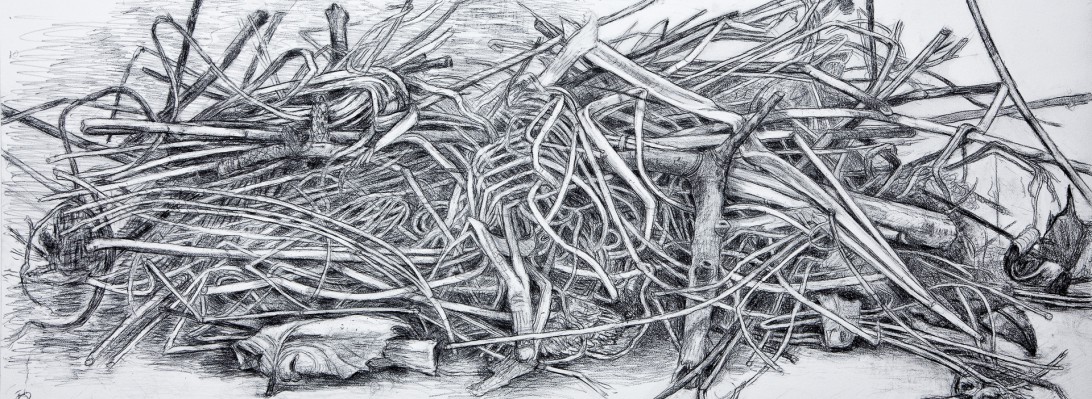Deborah Rockman and I met in college. I immediately felt a deep connection to her that seemed pre-established. She is a very political artist and person. We did a telephone interview and then cleaned up her naturally irreverent language, I hope her spirit and her humor come through. I wanted to know how things have changed, the current shape of teaching, and to discuss her own work and activism.
She has written two books, Drawing Essentialswhich explains every aspect of drawing and The Art of Teaching Art, both published by Oxford University Press.
This interview will explain how one woman in Western Michigan has singlehandedly changed the way drawing is and will be taught. We did this interview by phone on Feb. 10, 2018.

Christine: How did you start making art to begin with?
Deborah: As a kid one of my goals was to be a perfect student in Catholic grade school, that included art projects. I took art classes in high school, I really liked it and knew when I went to college I wanted to somehow be involved with art.
C. You and I met at Western Michigan University in the printmaking department studying with Curtis Rhodes and Chuck Heasley who studied at the Tamarind Institute.
D. I was focused on printmaking. I was making drawings on litho stone and printing them so I could have duplicates of my drawings. I did some intaglio and aquatinting also. I ended up getting a Bachelors Degree in Fine Art with a secondary teaching certificate. Didn’t get a BFA, never had a BFA show.
C. I want to talk about your work and teaching and how they intertwine.
D. After my undergrad degree I spent a year teaching a graphic design program in a high school in Davison, Michigan. Didn’t like it. Too many limits placed on the students, who acted out accordingly, I didn’t want to be a baby sitter. My colleagues would sit in the teacher’s lounge and talk about gays and how horrible they were. I thought this is not what I want to do and I could get fired for who I am. At the end of my year there I got into an accident and was laid up for a year. During that time I decided to go to grad school to study drawing and printmaking. After researching I applied to one school and was accepted at the University of Cincinnati. I had a full ride. Back then admission to grad school was almost always free. It was late 1970s and early 1980s. I had a relatively good experience. All my teachers were men with one exception. I learned a lot about printing from two Tamarind printers, but in terms of the ideas in my work and talking about concept and content I didn’t get much. I felt I learned more from my fellow students. I knew by then I wanted to teach.
– See more at: http://www.arteidolia.com/deborah-rockman-interview/


